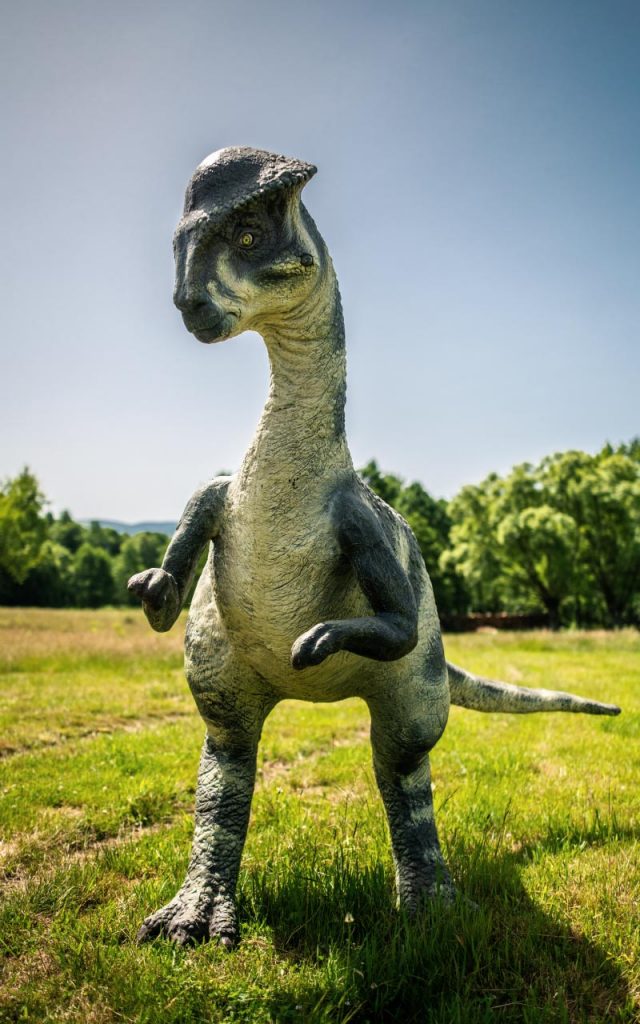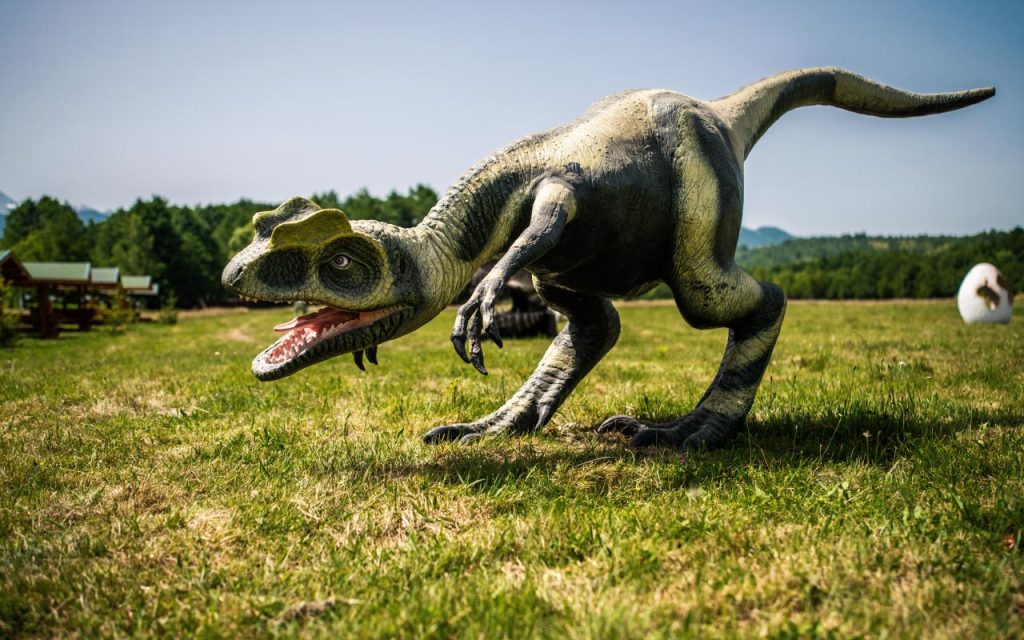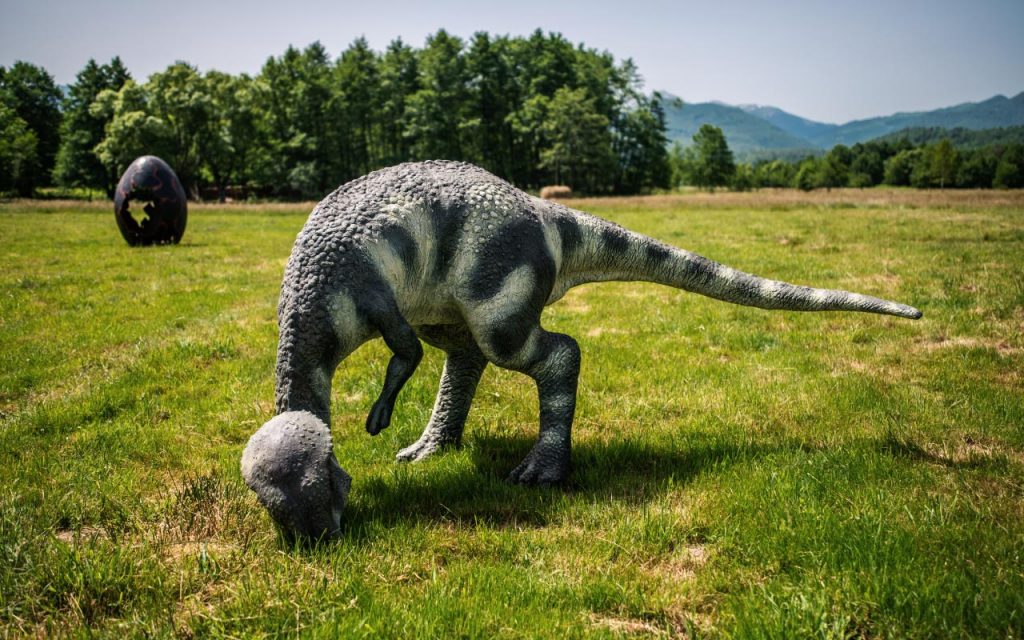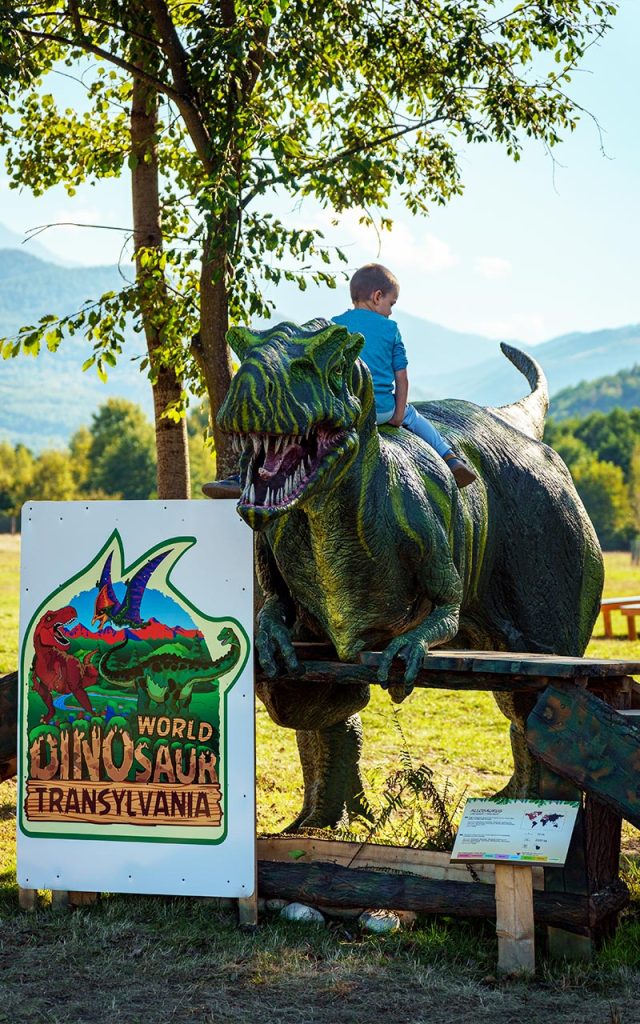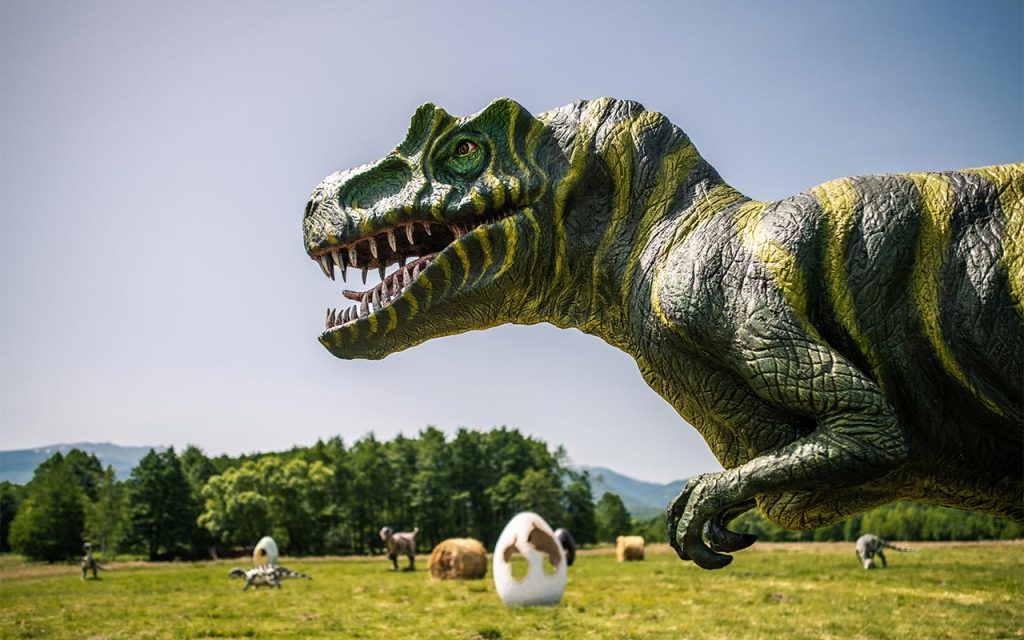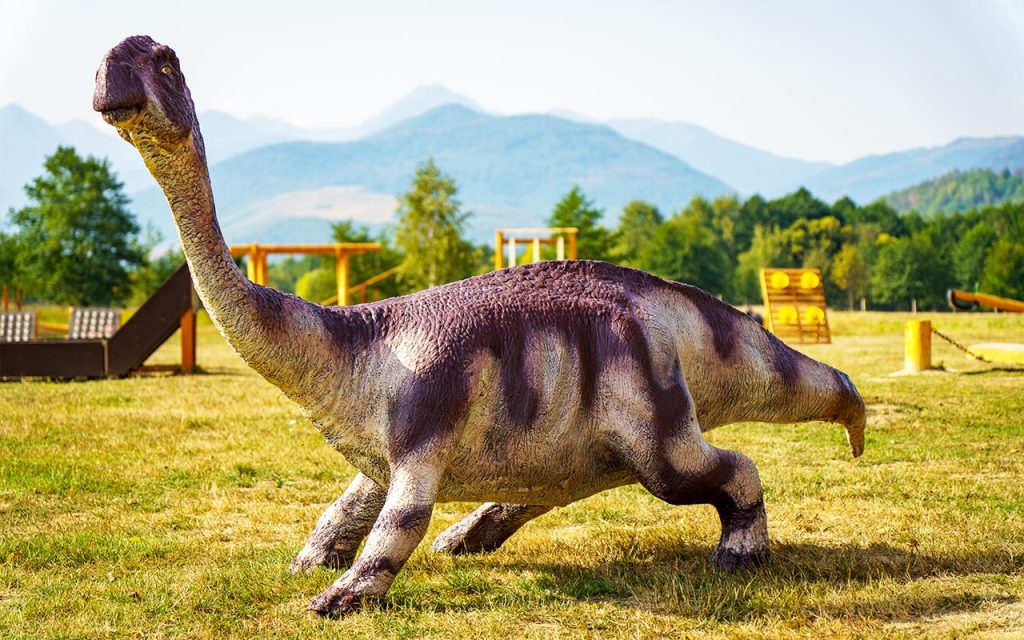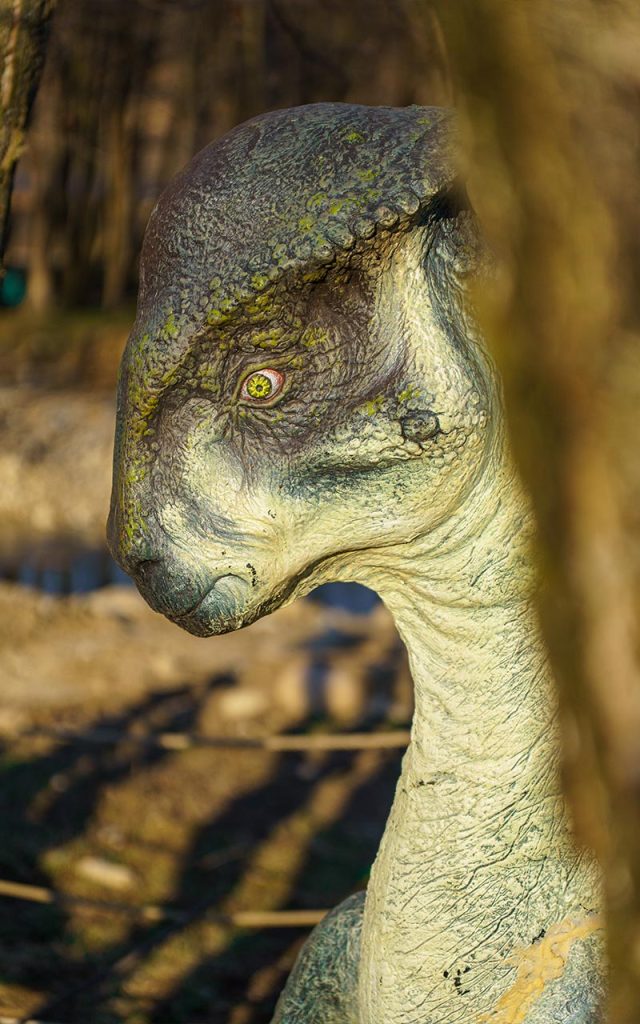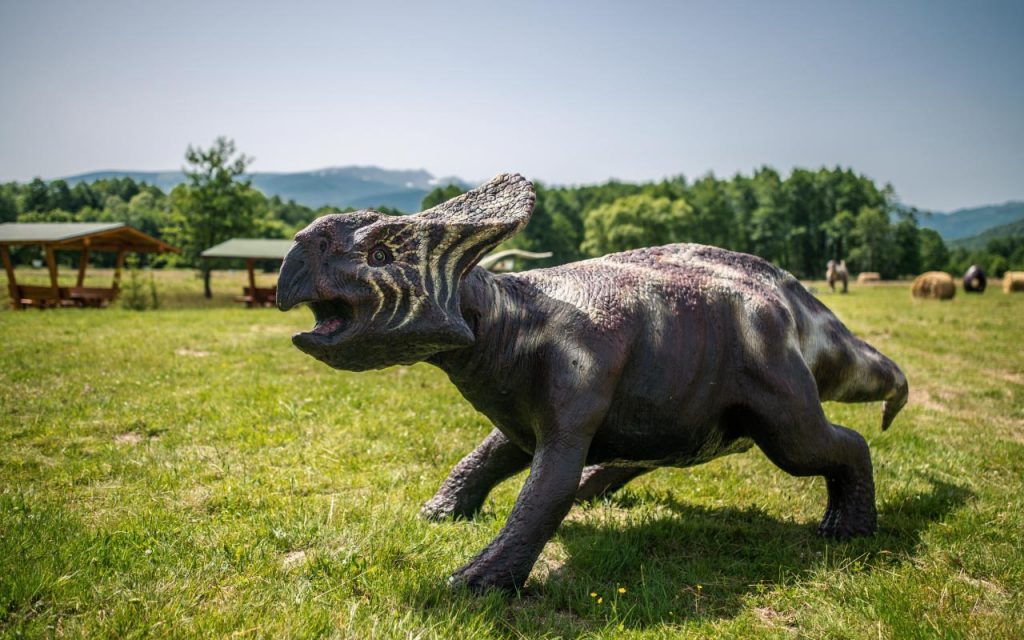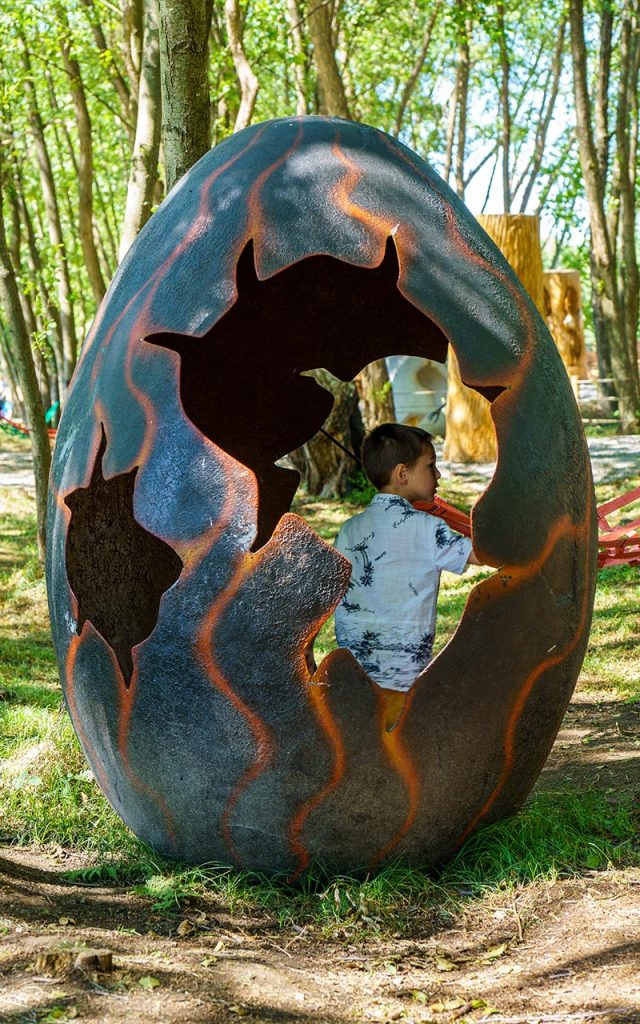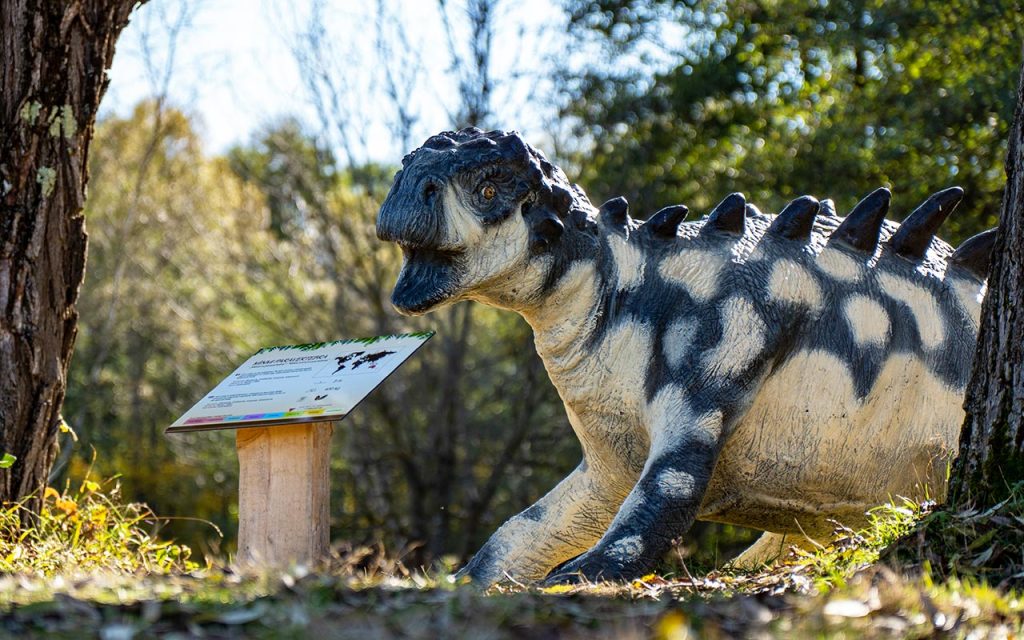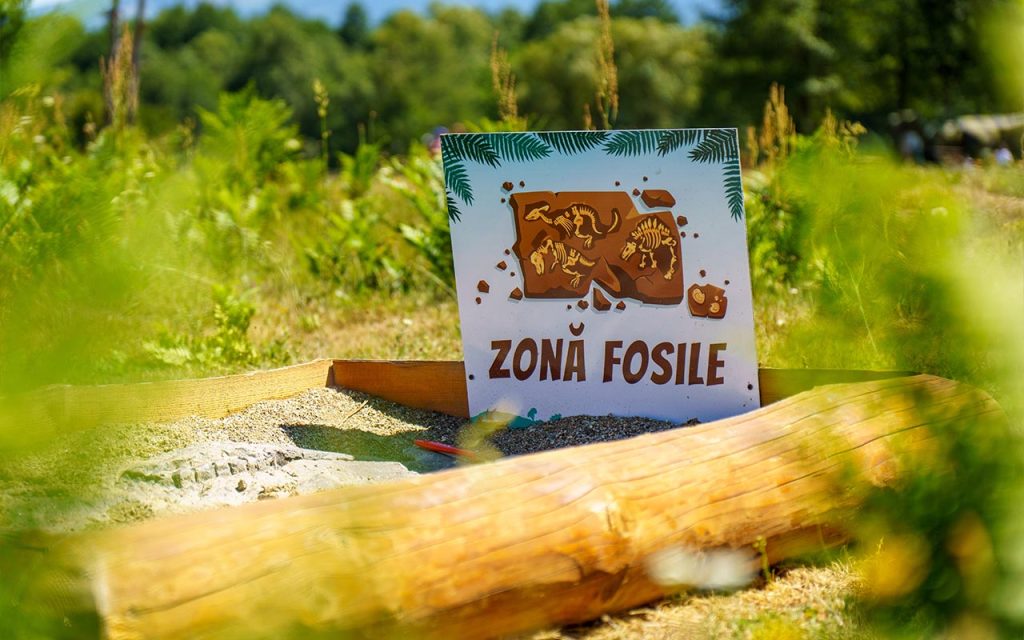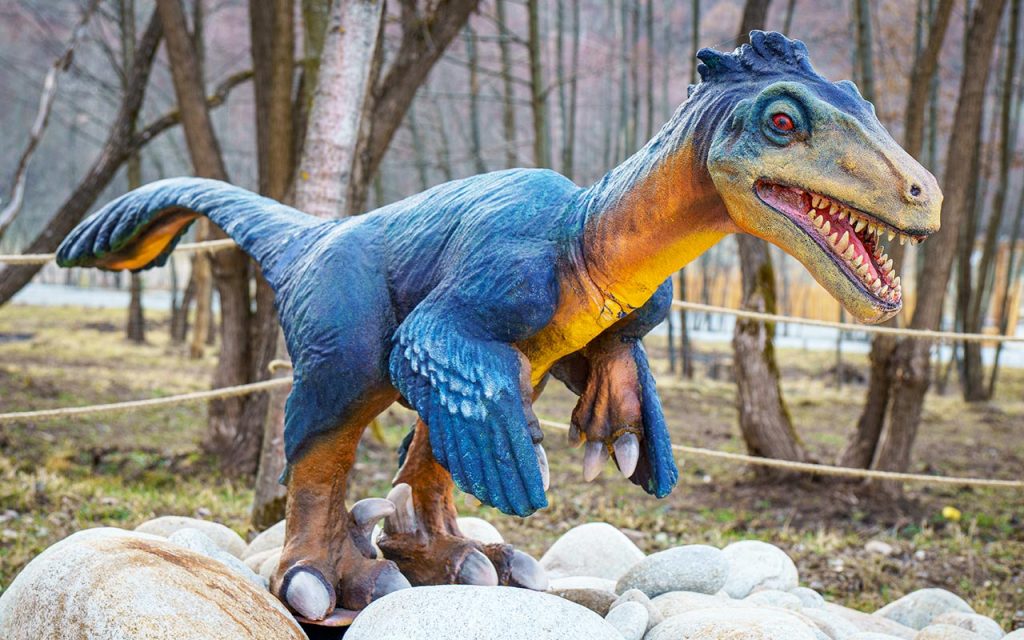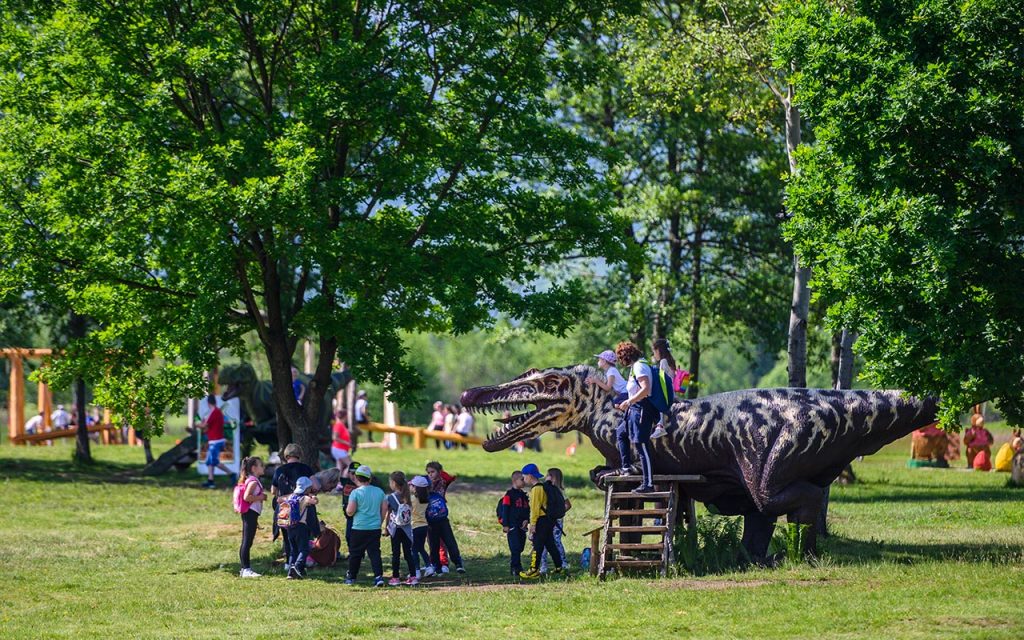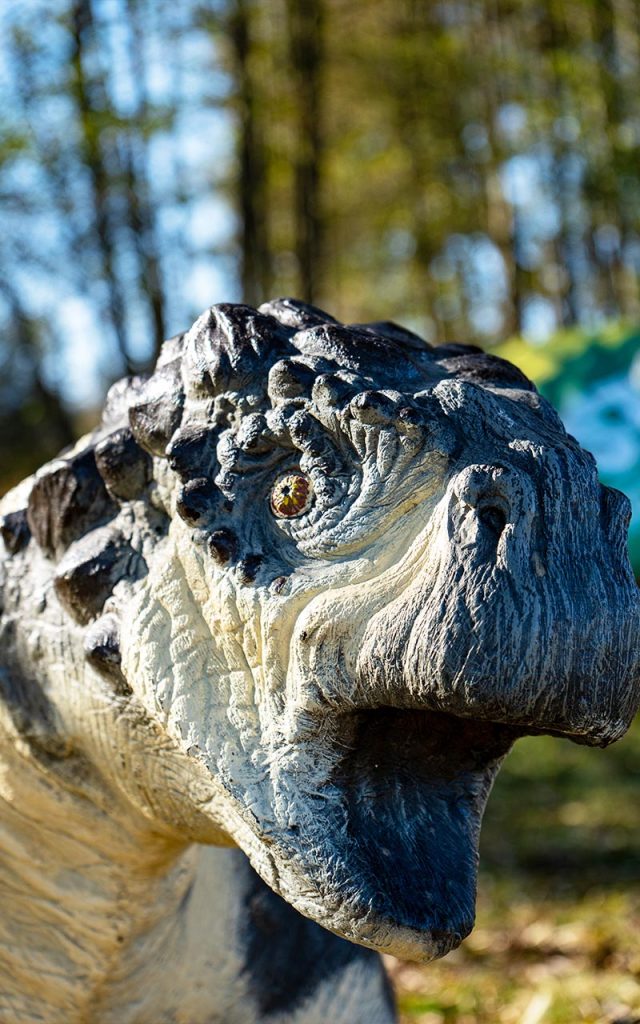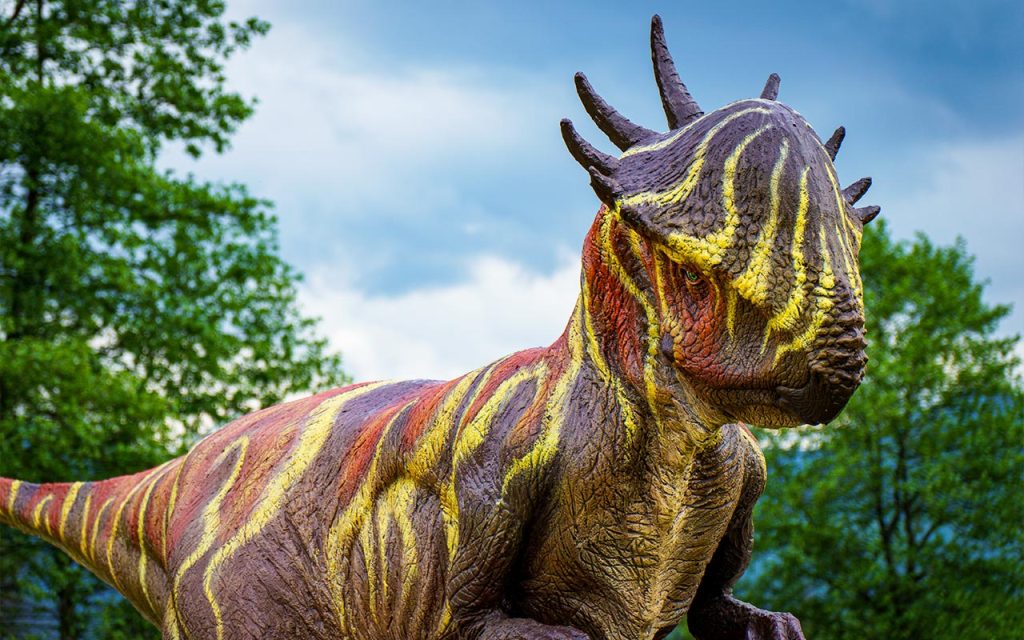Dinosaur world
Discover a prehistoric world
Enter the world of dinosaurs from the land of Hațeg and find out more about dwarf giants that used to live here

On the footsteps of GIANTS
Are you ready for a time travel in the footsteps of the Hațeg dinosaurs? We invite you to discover a fascinating world, which will take you in the past, on the Transylvanian territory 70-67 million years ago.
In the land of Hațeg, more precisely on the Sibișel valley, at Sânpetru, the sedimentary rocks formed at the end of the Cretaceous, continue to provide paleontologists with fossil remains of prehistoric animals that lived in this land a long time ago. A charming place worth rediscovering and exploring by all dinosaur lovers.
Inside the Dinosaur World Transylvania park you will see both the Bondoc Dragon and other species of dinosaurs dating from the Cretaceous and Jurassic period, ingeniously replicated using different materials, to render, in the most realistic way, a complex and beautiful experience.
Also, inside the park, you will find a dinosaur trail that is worth following. In this way you will immerse yourself in a mysterious and captivating world that we all love.
IN THE WORLD OF Dwarf Dinosaurs
The land of Hateg is known for its important historical facts, a place where the Romans founded the capital of Dacia, a land famous for its medieval stone churches, but due to discoveries in recent decades we turn our attention to dwarf dinosaurs.
The geodiversity and biodiversity of the land of Hațeg have a lot to show, and we want to take you to the fascinating world of prehistoric reptiles! This is where the first dinosaur fossils in Romania were discovered.
So let’s explore this rich place, this faunal ensemble that in the Cretaceous era was dominated by dinosaurs of different species, both herbivores and carnivores.
Hațeg dinosaurs are famous all over the world for a biological phenomenon called “dwarfism or insular dwarfism”. These dinosaurs lived for several million years in solitary confinement on the “island of Hateg”, which led them to this particular form.
HATZEGOPTERYX
In this dwarf-dominated world, paradoxically, one of the largest flying animals, if not the largest pterosaur, was found, belonging to the group of reptiles, namely Hatzegopteryx tambema “the scary winged animal of Hațeg”, which had a skull of almost 3 m long, with a distance between the extremities of the wings spread of almost 12 m.
Name: Hatzegopteryx thambema
Authors: Buffetaut, Grigorescu and Csiki
Meaning of the name: the frightened wing of Hațeg
Belonging: Pterosauria, Azhdarchidae
Distribution: known only from the Hațeg Basin, maybe also from the Transylvanian Basin
Lifestyle: aerial, gliding, maybe secondary terrestrial
Feeding mode: carnivore, predator, fisherman and / or necrophagous
Size: 10-12 m wingspan, 2 m skull length, 18 kg


IN THE WORLD OF Dwarf Dinosaurs
The land of Hateg is known for its important historical facts, a place where the Romans founded the capital of Dacia, a land famous for its medieval stone churches, but due to discoveries in recent decades we turn our attention to dwarf dinosaurs.
The geodiversity and biodiversity of the land of Hațeg have a lot to show, and we want to take you to the fascinating world of prehistoric reptiles! This is where the first dinosaur fossils in Romania were discovered.
So let’s explore this rich place, this faunal ensemble that in the Cretaceous era was dominated by dinosaurs of different species, both herbivores and carnivores.
Hațeg dinosaurs are famous all over the world for a biological phenomenon called “dwarfism or insular dwarfism”. These dinosaurs lived for several million years in solitary confinement on the “island of Hateg”, which led them to this particular form.
HATZEGOPTERYX
In this dwarf-dominated world, paradoxically, one of the largest flying animals, if not the largest pterosaur, was found, belonging to the group of reptiles, namely Hatzegopteryx tambema “the scary winged animal of Hațeg”, which had a skull of almost 3 m long, with a distance between the extremities of the wings spread of almost 12 m.
Name: Hatzegopteryx thambema
Authors: Buffetaut, Grigorescu and Csiki
Meaning of the name: the frightened wing of Hațeg
Belonging: Pterosauria, Azhdarchidae
Distribution: known only from the Hațeg Basin, maybe also from the Transylvanian Basin
Lifestyle: aerial, gliding, maybe secondary terrestrial
Feeding mode: carnivore, predator, fisherman and / or necrophagous
Size: 10-12 m wingspan, 2 m skull length, 18 kg

DINOZAURUL-BALAUR
The story of the Bondoc Dragon begins with Mátyás Vremir, a geologist and paleontologist who, after research in the Sebeș Valley, discovered a new fossil, later named the Bondoc Dragon. A dwarf giant from the late Cretaceous, related to Velociraptor.
Most of the dinosaurs described, including those from Ţara Hațegului, have names that are derived from Greek or Latin words, according to the customs of the biological sciences. Unlike them, the newest member of the Hateg dinosaur community has a Romanian name. In fact, it can be understood without any translation, meaning an ancient animal belonging to reptiles (hence the reference to ‘dragon’, a mythical creature of reptilian nature in Romanian folklore, somewhat assimilated to dragons in Asian mythology) and a rather robust constitution of the body, compared to its relatives, slender and agile animals such as Velociraptor.
You can admire an excellent replica right inside our park.
Name: Bondoc dragon
Authors: Csiki, Vremir, Brusatte and Norell
Meaning of the name: the name refers to the ‘dragon’ nature (mythical correspondent of reptiles, hence dinosaurs) of the animal, as well as its massive appearance
Belonging: Dinosaur, Saurischia, Theropoda, Dromaeosauridae
Distribution: known only from Transylvania (including Hațeg Basin)
Lifestyle: terrestrial, bipedal, semi-cursorial (runner)
Feeding: carnivore, active predator, pack hunter
Size: 1.7-2 m long, 12-15 kg
DINOSAUR EGGS
Also in the Hațeg Basin, more precisely in Tuştea, the first and most important nest with dinosaur eggs dating from the Upper Cretaceous period about 72-66 million years ago was discovered. Dinosaur eggs are one of the rarest fossils, given the low conservation potential of these fragile remains.
Nearly 100 eggs have been found in the fossiliferous level, in groups of 2 to 13, the vast majority in a more or less advanced state of fragmentation, indicating that most eggs have hatched again around them and even inside. tiny bones of freshly hatched chicks were found in them.
The Tuștea site, later in Totești and Nălațvad, are remarkable because they are the only points in Central and Eastern Europe where such nests with dinosaur eggs are found.
See the dinosaur eggs reproduced in our park!


DINOSAUR EGGS
Also in the Hațeg Basin, more precisely in Tuştea, the first and most important nest with dinosaur eggs dating from the Upper Cretaceous period about 72-66 million years ago was discovered. Dinosaur eggs are one of the rarest fossils, given the low conservation potential of these fragile remains.
Nearly 100 eggs have been found in the fossiliferous level, in groups of 2 to 13, the vast majority in a more or less advanced state of fragmentation, indicating that most eggs have hatched again around them and even inside. tiny bones of freshly hatched chicks were found in them.
The Tuștea site, later in Totești and Nălațvad, are remarkable because they are the only points in Central and Eastern Europe where such nests with dinosaur eggs are found.
See the dinosaur eggs reproduced in our park!

